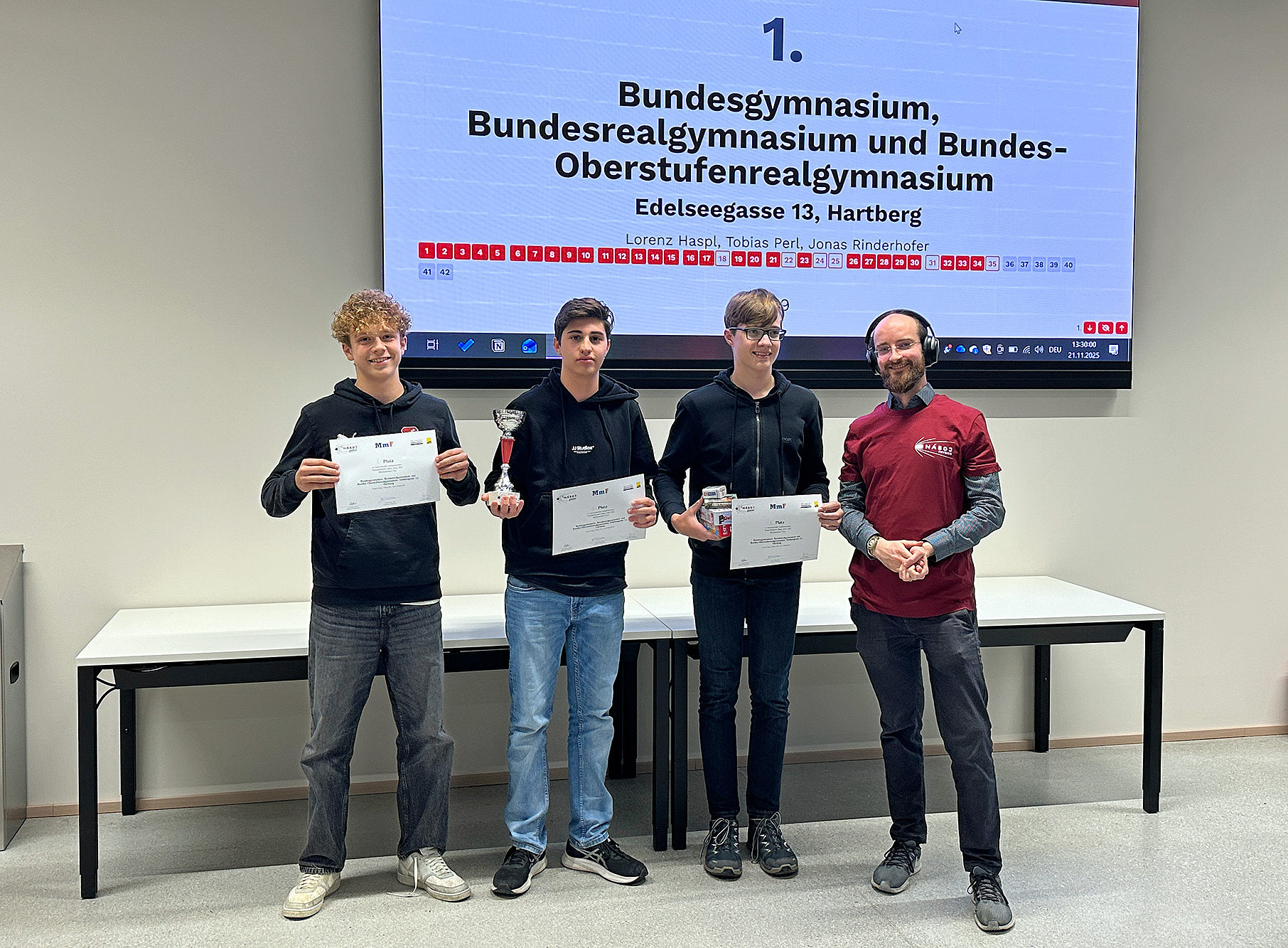The sum of six different positive integers is 22. What is their product? Or: It is so hot in the oven that the temperature in Fahrenheit would be exactly twice as high. How many degrees centigrade is it? The 25 Styrian teams from the 8th and 9th grades had to solve these and even more complex examples on 21 November at the University of Graz. They competed simultaneously with colleagues from numerous other European countries. "In the competition, we want to show possible applications of maths in everyday life. It's not about reproducing school material," explains Michael Fischer from the Department of Mathematics at the University of Graz, who brought the event to Austria. The participants need creativity and must be able to think outside the box. "Teamwork is very helpful for this. But there should also be at least one person who is quick at arithmetic," explains the researcher.
As soon as a group has solved an example, they are given the next one, with the level of difficulty constantly increasing. The thrill of competition and the desire to solve puzzles are a great motivation for many. "In some countries, there are even extra lessons in the afternoon, which the children attend voluntarily in order to be successful at Náboj," reports Fischer. Qualitative surveys have shown that such competitions increase the desire to do maths and give the subject a better image. "It's important to see in which areas you can apply maths. Many adults also enjoy solving Sudokus and didn't like the lessons."
